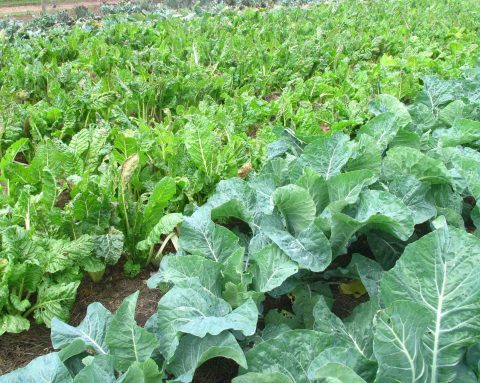EasyDIY
DIY 101: Raising Your Garden
By: Angela Richardson
Growing your own garden is bound to bring hours of joy to anyone with green fingers. Best of all, it’s the perfect place to start for newbie gardeners.
Why create a raised garden?
Aside from the fact that one can create optimal soil conditions for selected vegetables or plants, depending on the bed height, it can make gardening far easier working at a higher level.
This makes it the perfect area of a garden to plant seasonal produce. They normally look good too and can be made from wood, railway sleepers, concrete blocks, cement or bricks, creating a feature in your garden.
Raised beds tend to get warmer more quickly too, allowing you to plant earlier in spring. Since you can plant closely in a raised garden, space is more efficient and yields are increased.
Where to start when planning a raised garden?
Particularly for a vegetable garden, you’ll need to find an area with good sunlight (at least eight hours per day). You can grow vegetables in most types of garden soil, although for the best results you should dig the ground well in autumn or spring and add in lots of mature compost.
For a successful crop, be mindful of the type of vegetables and herbs to grow at which time of year (since the climate throughout South Africa varies considerably it is difficult to give strict planting guidelines, so it’s best to seek advice from the back of seed packs or from your local nursery). If tempted to plant what your palate dictates, think again, you need to plant herbs and vegetables that grow best in your local climate.
The ultimate raised vegetable and herb garden should give you a continuous supply of produce. To achieve this, it is best to make small, successive plantings. Ideally, there should always be an empty part of the bed, ready for the next planting.
Group together those crops that grow at the same rate and at roughly the same height. That way each will get the required sunshine and they can all be harvested at the same time, for example, carrots and leeks. All plants that have passed their best should be pulled and can be added to a compost heap (of course, diseased plants should be kept out of your compost heap altogether).
What to consider when building a raised bed
Building a raised bed is a relatively simple job with dimensions determined by the space available. The length of the garden is determined by space and your needs and the height can be adjusted to suit you, however, it is recommended that the raised beds are at least 32cm deep to allow roots to grow sufficiently.
If using wood, take care not to use treated wood, especially if planting edibles. Rot-resistant woods, although expensive, are good. While recycled timber will eventually rot, but because it is less expensive it is easier to replace, so is a possible alternative. When using wood, don’t forget to use galvanised nails (or screws) to fix the wooden boards in place.
It is important to consider drainage too, which will depend on the surface on which you are placing the raised bed.
Preparing a raised garden
Getting the soil right will be the first step to a healthy harvest. It should have a loose texture and crumble easily in your hand. It needs to drain efficiently, but also needs to absorb water and essential nutrients. Fill the beds with a mix of topsoil, compost, and other organic material, such as manure, to give your plants a nutrient-rich foundation.
It’s important to remember that the soil in a raised bed will dry out more quickly and frequent watering may be required. Fixed sprinklers are ideal in a raised garden, alternatively, you can make small holes in a hosepipe that lies on the ground between the plants. The newly planted crops will need regular watering until established. Once established, don’t overwater unless they are dry, particularly for root crops (carrots, asparagus, globe artichokes, cabbages) as their roots will penetrate deep into the soil.







 Sign-up and receive the Business Media MAGS newsletter OR SA Mining newsletter straight to your inbox.
Sign-up and receive the Business Media MAGS newsletter OR SA Mining newsletter straight to your inbox.